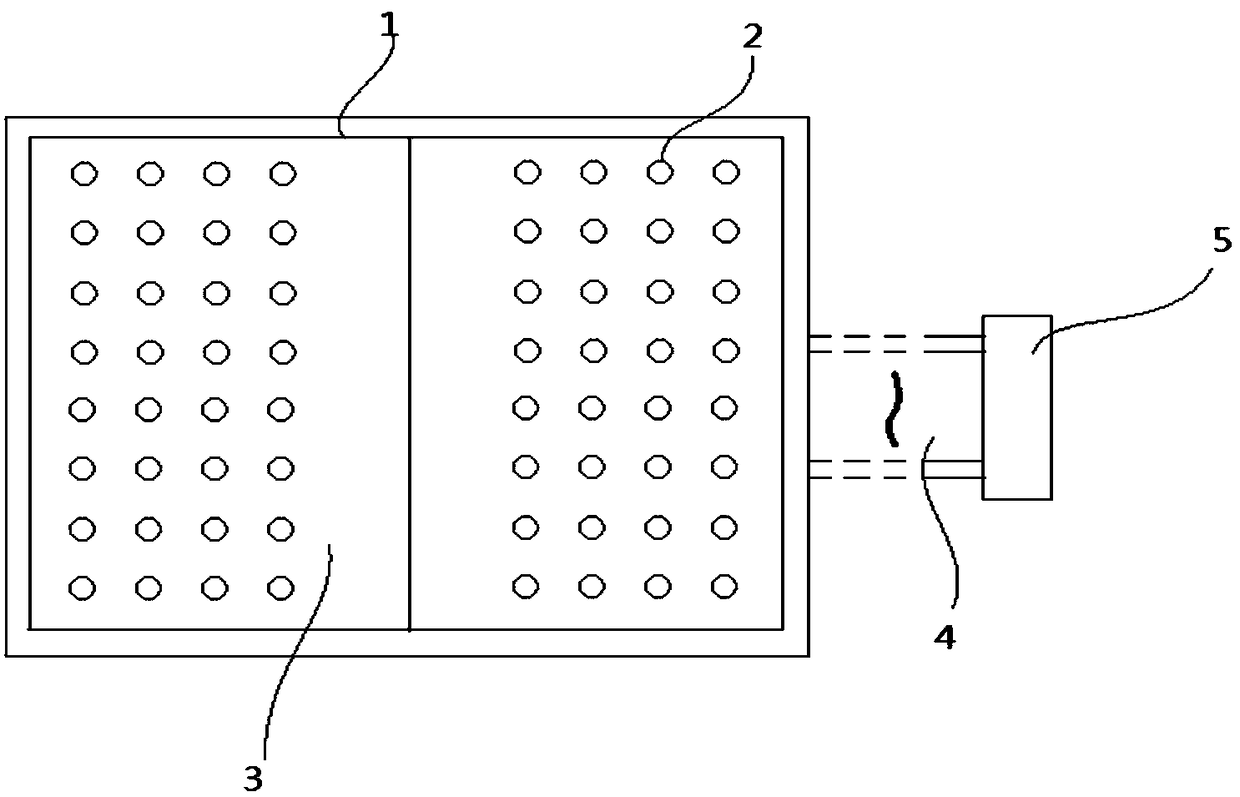Detection method of biological surface electrical signal
A detection method and technology of electrical signals, applied in the directions of diagnostic recording/measurement, medical science, diagnosis, etc., can solve the problems such as the inability to guarantee the consistency of test conditions, the damage of the tested organism, the characteristics of the interference signal, etc., and achieve high-throughput testing. and the effects of storage, efficient detection, and noise reduction
- Summary
- Abstract
- Description
- Claims
- Application Information
AI Technical Summary
Problems solved by technology
Method used
Image
Examples
Embodiment Construction
[0032] Below in conjunction with accompanying drawing, describe in detail, as figure 1 , figure 2 As shown, the electrode carrier 3 of the flexible printed circuit board is adopted, and the electrode carrier 3 adopts double-sided printed circuit wiring, and the electrode points 2 arranged in an array are arranged on the electrode carrier 3, and the electrode point array of the electrode carrier 3 is left and right Divide into 2 areas on average, and use 2-3mm printed circuit wiring as the ground wire 1 for fully enclosed surrounding, and set the pad 6 on the electrode point 2, and fill the pad with solder 7 to achieve soldering 7 and the electrical connection of the pad 6, the surface of the solder is plated with silver or silver chloride 8, and each electrode point 2 pad 6 is electrically connected to the The common interface end 5, the common interface end 5 is connected to the excitation source and the signal collector through a shielded cable, the common interface end 5 ...
PUM
 Login to View More
Login to View More Abstract
Description
Claims
Application Information
 Login to View More
Login to View More - Generate Ideas
- Intellectual Property
- Life Sciences
- Materials
- Tech Scout
- Unparalleled Data Quality
- Higher Quality Content
- 60% Fewer Hallucinations
Browse by: Latest US Patents, China's latest patents, Technical Efficacy Thesaurus, Application Domain, Technology Topic, Popular Technical Reports.
© 2025 PatSnap. All rights reserved.Legal|Privacy policy|Modern Slavery Act Transparency Statement|Sitemap|About US| Contact US: help@patsnap.com


